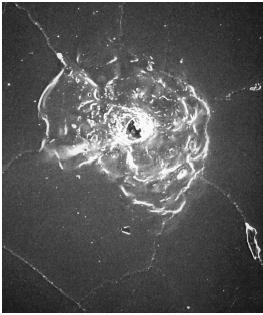U.S. And Russian Satellites Collide, Communications Satellite Hits Russian Satellite; International Space Station Deemed Safe - CBS News
More info:
http://www.spaceflightnow.com/news/n0902/11iridium/
(CBS) By CBS News space analyst Bill Harwood
A commercial Iridium communications satellite collided with a Russian satellite or satellite fragment, Tuesday, creating a cloud of wreckage in low-Earth orbit, officials said Wednesday. The international space station is not threatened by the debris, they said, but it's not yet clear whether it poses a risk to any other satellites in similar orbits.
"Everybody is saying the risk is minimal to NASA assets," said an agency manager who asked not to be identified.
Once source said U.S. Space Command was tracking about 280 pieces of debris, most of it from the defunct Russian satellite. A spokesman for U.S. Space Command was not aware of the incident but he said he would try to track down additional details. Calls to Iridium Satellite LLC were not immediately returned.
Iridium operates a constellation of some 66 satellites, along with orbital spares, to support satellite telephone operations around the world. The spacecraft are in orbits tilted 86.4 degrees to the equator at an altitude of about 485 miles.
The space station circles the globe at an altitude of about 215 miles in an orbit tilted 51.6 degrees to the equator. Other civilian science satellites operate in polar orbits similar to Iridium's and presumably could face an increased risk as a result of the collision. But again, details were not immediately available.
More info:
http://www.spaceflightnow.com/news/n0902/11iridium/
Last edited:




